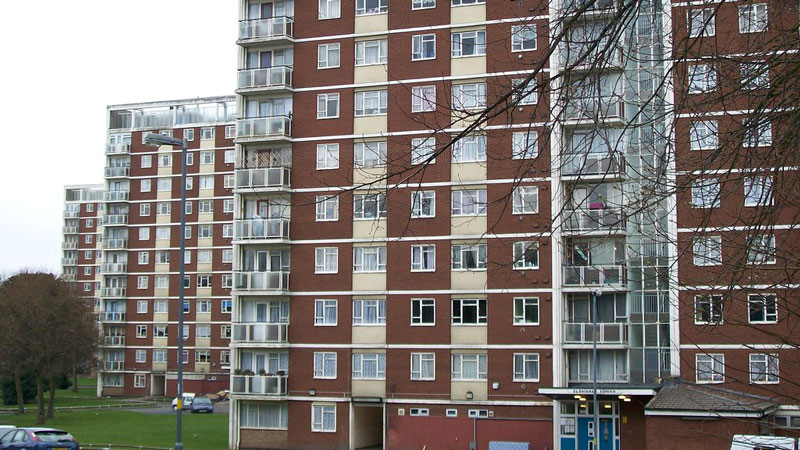Images: MJ Richardson and Chemical Engineer
Council housing has been with us for a long time – a century, in fact. This 31 July marked the hundredth anniversary of the Housing and Town Planning Act 1919, also known as the Addison Act after then health minister Christopher Addison.
In the century since, there have been many ups and downs. But downs are dominating – and have been a feature for the past 40 years.
In 1919, if you didn’t own your own home, you probably lived in privately rented housing – a sector dominated by tales of poor housing, overcrowding and exploitative, profiteering landlords.
In 2019, owning your home is pretty much an impossible dream for younger adults entering the labour market, and for low-paid workers generally, including far too many workers in public services.
Waiting lists for social housing – whether provided by councils or housing associations – are growing to such an extent that moving into a secure rented home of your own can be equally out of sight.
This means that people who don’t own their own home are usually living in privately rented accommodation, where tales of poor housing, overcrowding, exploitative landlords and insecure housing dominate.
We’ve been here before.
‘Homes fit for heroes’
The Addison Act came after the First World War and sought to provide “homes fit for heroes”, looking to build half a million new homes across Britain in three years. It was followed by housing acts in 1924 and 1930 which granted funds to councils to address acute housing shortages and obliged them to clear and replace slum housing.
Throughout the ’20s and ’30s – a period covering the Great Depression – councils built a total of 1.1 million homes.
Then came the Second World War. This not only put a stop to new house building, but brought with it the bombing campaign that destroyed swathes of housing – especially in ports such as east London, Glasgow, Liverpool, Cardiff, Swansea, Southampton and Belfast, and manufacturing centres like Birmingham, Coventry and Manchester.
By the end of the war, the UK faced its worst housing shortage of the 20th century. Homes had been destroyed and others badly damaged. One estimate said that, in 1945, England and Wales alone needed 750,000 new homes to house families needing accommodation.
So the 1950s and ’60s saw a new surge in council homes, whether in houses or, increasingly, in developments of flats.
Some 1.5m new homes were built between 1945 and 1955 and, by 1961, 26% of householders were renting their homes from local authorities – up from 10% just before WWII.
The building programmes continued throughout the 1970s, often replacing quick-build housing thrown up in a rush to meet the emergency need in the immediate post-war period.

Sell-off
But then the 1980 housing act introduced the right to buy, allowing tenants to buy their council home at a substantial discount of up to 60%.
It was the move of a government that was determined to overthrow the post-war consensus.
More than a million council homes were sold within the first 10 years of the new regime.
This coincided with cuts to the money available to councils, who often found themselves left with older housing stock with higher maintenance costs and in need of extensive repairs.
And when governments in the 1990s did make funds available for those repairs, it often came with strings attached, requiring councils to transfer ownership of the homes to housing associations or other registered social landlords.
For many years, councils were banned from using the income they received via right-to-buy sales to build new council housing. And they faced the disincentive that building quality housing would only mean they were likely to be bought at a discount within a few years. Inevitably, fewer council houses meant longer waiting lists.
So private landlords stepped in – in many cases, buying former council homes and renting them out at much greater rents. Which brings us to today.

Supply and demand
UNISON has produced a briefing to mark the centenary of the Addision Act. This states: “Since 1919, the only times we have built sufficient homes to address housing need across the nation have largely been due to major council house-building programmes. A hundred years later, the nation faces another crisis. We are simply not building enough homes – particularly social rented homes – to meet housing demand.
“The crisis has led to spiralling rents and house prices across the nation, causing an affordability crisis for public service workers and citizens on modest incomes, who struggle to afford to rent or buy a decent home.
“With housing now the largest single demand on household incomes, it’s crucial that all councils are enabled to build at scale again.”
Owning a home has become virtually impossible for many workers who provide our key public services – including NHS cleaners, teaching assistants, librarians, nurses, police and community support workers – living in the majority of local authority areas across England, Scotland and Wales.
This is spelled out in the report Priced Out: home ownership and public sector workers, published by the union last year and downloadable from the UNISON website.
At the same time, UNISON produced Nothing Going On But the Rent, a report highlighting the high cost of renting for public service workers in England.
It focussed on England because housing – and its regulation – is a devolved matter. The laws, particularly those governing rents and tenancy agreements, differ in each of the four countries of the UK. For instance, Scotland has banned letting fees and the Welsh Assembly is legislating its own ban. The Parliament in Edinburgh has also legislated for secure tenancies. Westminster hasn’t.
The report looked at how much workers in five public sector roles – a porter in NHS England, a special needs teaching assistant, a refuse driver, a nurse and a police community support officer (PCSO) – spend on rent and how much of their monthly salary they have to spend on rent, depending on where they live.
It found that average rents were unaffordable in many regions, especially for people working in low-paid jobs such as hospital porters and teaching assistants. In six out of nine English regions, rental costs are more than a third of workers’ monthly wage.
You can download the report here.
And check out our Public Services Data blog based on the report.
It’s time to invest in a new generation of quality homes. UNISON has identified a number of actions government can take to echo the original spirit of 1919:
- A national house-building programme led by councils, to build at least 100,000 social rented homes a year for those on modest incomes;
- Long-term funding certainty for councils and housing associations, allowing them to develop their in-house capacity, skills and expertise, and invest in new and existing homes;
- A new definition of affordable housing, tied to the incomes of the lowest earners rather than market prices, to make homes truly affordable;
- Halting the privatisation of council housing stock, services and jobs, abolishing the right to buy and ending the conversion of social housing to market-based “affordable rent” housing;
- Overhauling the private housing system to improve rights for tenants to make private renting more stable and affordable in England, and to improve the quality of housing, including plans to empower councils to introduce borough-wide private landlord licensing schemes;
- Secure tenancies in council homes, housing association homes and the private rented sector.
- The government to deliver on its commitments set out in the Social Housing Green Paper for England.
The union will be expanding on these in a new housing manifesto launched in the autumn.
The Great British Housing Rip-Off!
UNISON has produced an online tool to highlight the raw deal that ordinary working people are getting. Simply entering your post code and income will tell you how long it will take to save enough for a deposit on a home near you (don’t worry, the information isn’t kept, processed or shared).
Share The Great Housing Rip-Off with your members, friends and family. And use the tool to email your MP to demand change.






